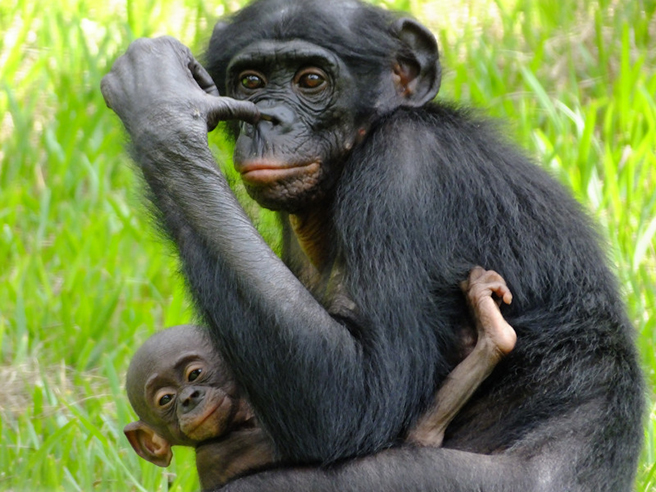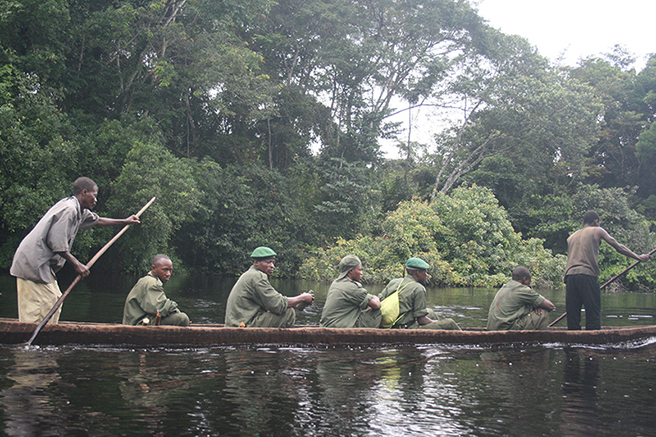The Long Road to Ecotourism

Tall trees, year-round warmth, friendly faces…and bonobos as far as the eye can see. This could be the front cover of a flyer pitching a world-class holiday destination. Behind the large, stylishly designed text in Times New Roman or Verdana sits a unique photograph: an upward camera shot of a clear, blue sky beyond a dense canopy, with streams of sunlight reaching through the thickness.
It is even easy to imagine the rest of the setting down below, towards the underbrush where occasionally a cool breeze cuts through the detectably high humidity of the forest air and birdsongs seemingly echo for miles much to one’s delight. Make your reservations quickly because places are limited. All this could be.
But, for now, Iyondji Community Bonobo Reserve (ICBR), approximately 1,100 km² of protected tropical moist forest in northwestern Democratic Republic of Congo, is a slightly different scenario because threats to forests and its wildlife are still present.
So, let’s try again…

Tall trees, year-round warmth, a wooden canoe moored by a young broadleaf tree…and Romain Kyandoghere, head conservationist, with a handful of new ecoguards embark along the winding Luo (Maringa) River to enter ICBR from the north. The purpose of their patrol, as usual, is to look out for poachers, illegal occupants, and intentional destruction of habitats.
Without ado, following a day’s progress into the reserve, the first signs of poaching are visible in the form of handcrafted wicker traps that are light, yet sturdy. Small mammals, such as the bush pig, are the poacher’s victims.
Romain wonders aloud, “Will we have to increase patrols and cover a larger area to learn more?”
He knows that sometimes a poacher places over 20 traps in an area and no longer knows how to control them and the ‘game’ rots in the trap. “Even in his terms,” Romain explains, referring to poachers, “it’s a waste!”
The trap is dismantled, and the sleeve of a cartridge found on the ground is packaged as evidence. It will be taken back to the storeroom at the ICBR office. Also, geographic coordinates of the current location are marked down on paper and will be projected on to the ICBR map back at the office, too.
ICBR is on the trail to ecotourism. But, one should bear in mind that trails are not like meticulously engineered roads adorning a city or town and serving the sole interest of a human population. They are paths that are low-impact and naturally blend into the surrounding.
In short, at ICBR the foundation for a kind of travel that emphasizes conservation, education, traveler responsibility, and active community participation is already afoot, AWF is making sure of that.
> Learn how AWF protects bonobos in the Democratic Republic of Congo